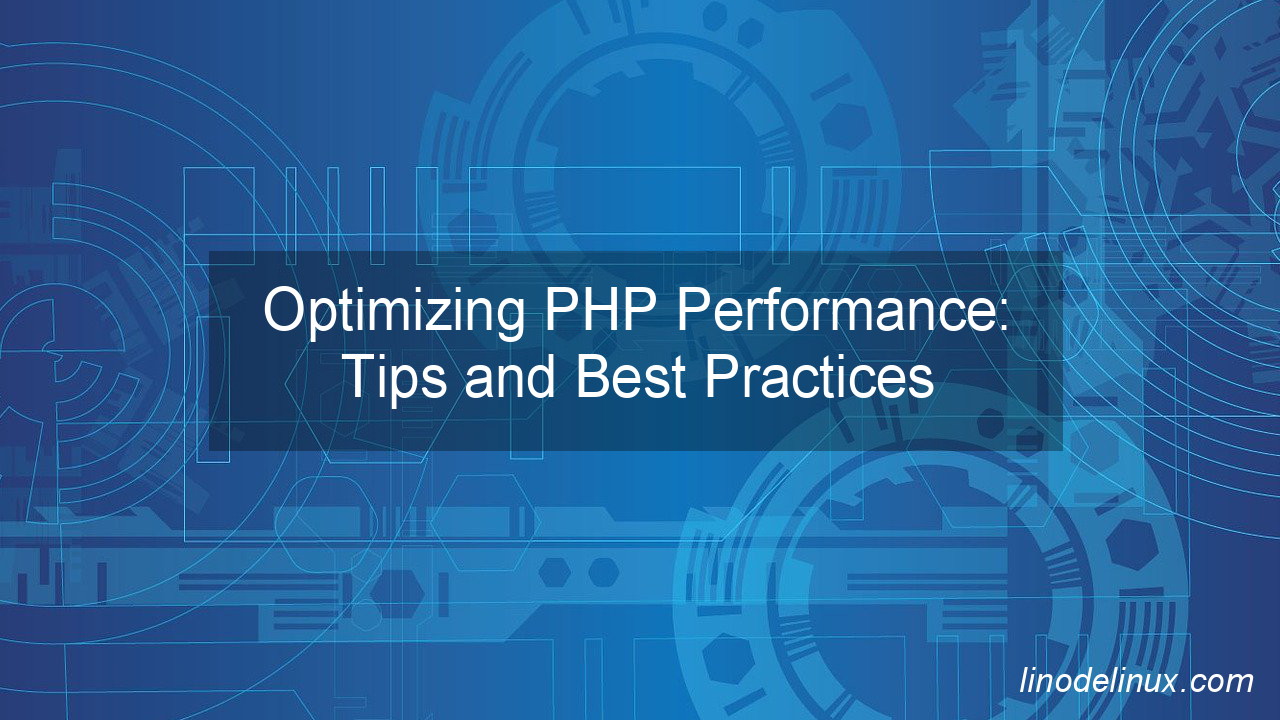Boost PHP app performance and security with expert tips, best practices, and configurations for Oracle Linux, Red Hat, and Ubuntu servers.
PHP remains one of the most widely used server-side scripting languages for web application development. For IT professionals developing PHP applications and server administrators maintaining server configurations, ensuring optimal performance and security is a top priority. This article delves into industry-standard practices, configuration examples, and tools to help you securely run PHP applications with maximum efficiency. We’ll explore mod_php, PHP-FPM, and FastCGI configurations for Oracle Linux 8/9, Red Hat 8/9, and Ubuntu Server versions.

1. Importance of PHP Performance Optimization
Efficient PHP applications reduce resource usage, improve response times, and provide a better user experience. Suboptimal configurations can lead to high server load, security vulnerabilities, and increased operational costs. Proper optimization ensures scalability, reliability, and compliance with security standards.
2. PHP Versions and Updates
Always Use the Latest Stable PHP Version
- New PHP versions introduce performance improvements and security fixes. For example, PHP 8.0 and later versions offer significant enhancements like the Just-In-Time (JIT) compiler.
- Ensure your application is compatible with the latest PHP version by updating dependencies and testing thoroughly before deployment.
Regular Updates and Patching
- Stay updated with PHP releases from php.net.
- Use distribution-specific repositories such as Remi’s RPM repository for Red Hat-based systems or Ondřej Surý’s PPA for Ubuntu.
3. Choosing the Right PHP Handler
mod_php
- Works with Apache HTTP Server.
- Integrates PHP as a module, offering simplicity but at the cost of higher memory usage.
- Best suited for low-traffic applications due to its lack of scalability.
PHP-FPM (FastCGI Process Manager)
- Designed for high-performance scenarios, PHP-FPM is more efficient than mod_php.
- Allows better resource control with features like process pools and adaptive process spawning.
- Recommended for large-scale applications and high-concurrency environments.
FastCGI
- Offers similar benefits to PHP-FPM but is less frequently used in modern setups.
- Can be a fallback option for compatibility with specific setups.
Recommendation
For most modern PHP applications, PHP-FPM is the best choice due to its flexibility and performance.
4. Configuring PHP-FPM for Optimal Performance
Installation and Setup
- Install PHP-FPM:
- Oracle Linux/Red Hat:
sudo dnf install php-fpm - Ubuntu:
sudo apt install php-fpm
- Oracle Linux/Red Hat:
Tuning PHP-FPM Configuration
Edit the php-fpm.conf or pool-specific configuration files in /etc/php-fpm.d/ (Oracle/Red Hat) or /etc/php/8.x/fpm/pool.d/ (Ubuntu).
Example Configuration:
[www]
user = apache
group = apache
listen = /run/php-fpm/www.sock
listen.owner = apache
listen.group = apache
pm = dynamic
pm.max_children = 50
pm.start_servers = 5
pm.min_spare_servers = 5
pm.max_spare_servers = 10
pm.max_requests = 500
php_admin_value[memory_limit] = 256M
Key Parameters:
- pm.max_children: Maximum number of child processes. Calculate based on server memory and application requirements.
- pm.max_requests: Prevent memory leaks by limiting the number of requests per process.
- memory_limit: Restrict memory usage to prevent exhaustion.
Secure Socket Configuration
Use a Unix socket (/run/php-fpm/www.sock) instead of a TCP socket for better performance and security.
5. Apache and Nginx Integration
Apache (With PHP-FPM)
- Enable the
proxy_fcgimodule:sudo a2enmod proxy_fcgi - Configure the virtual host:
<VirtualHost *:80> ServerName example.com DocumentRoot /var/www/html <FilesMatch ".+\.php$"> SetHandler "proxy:unix:/run/php-fpm/www.sock|fcgi://localhost" </FilesMatch> </VirtualHost>
Nginx (With PHP-FPM)
- Example configuration:
server { listen 80; server_name example.com; root /var/www/html; location / { index index.php index.html; } location ~ \.php$ { include fastcgi_params; fastcgi_pass unix:/run/php-fpm/www.sock; fastcgi_param SCRIPT_FILENAME $document_root$fastcgi_script_name; } }
6. Optimizing PHP Performance
Opcode Caching
- Use OPcache to cache precompiled script bytecode:
- Install:
sudo dnf install php-opcache # Oracle/Red Hat sudo apt install php-opcache # Ubuntu - Enable in
php.ini:opcache.enable=1 opcache.memory_consumption=128 opcache.max_accelerated_files=10000
- Install:
Memory Limit
- Set an appropriate
memory_limitinphp.inibased on application requirements:memory_limit = 512M
Session Management
- Store sessions securely by configuring
session.save_path. - Use memory-backed solutions like Redis for faster session handling:
sudo dnf install php-redis # Oracle/Red Hat sudo apt install php-redis # Ubuntu
Database Optimization
- Use persistent connections with PDO or mysqli.
- Enable query caching and optimize database schema.
7. Ensuring PHP Security
Disable Unnecessary Functions
- Restrict dangerous PHP functions in
php.ini:disable_functions = exec,passthru,shell_exec,system,proc_open,popen
File Upload Security
- Set strict limits on file upload size and execution time:
upload_max_filesize = 10M max_file_uploads = 5 post_max_size = 12M
Error Reporting
- Disable error display in production environments:
display_errors = Off log_errors = On error_log = /var/log/php_errors.log
Use HTTPS
- Always configure your web server to use HTTPS. Obtain an SSL certificate from Let’s Encrypt or a similar service.
Permissions
- Set correct file and directory permissions for your PHP application:
sudo chmod -R 750 /var/www/html sudo chown -R www-data:www-data /var/www/html # Ubuntu sudo chown -R apache:apache /var/www/html # Oracle/Red Hat
8. Monitoring and Debugging
Monitoring Tools
- Use tools like New Relic, Datadog, or PHP-FPM Status Page for real-time insights.
- Enable PHP-FPM status:
pm.status_path = /status
Debugging Tools
- Use Xdebug for local debugging during development:
sudo dnf install php-xdebug # Oracle/Red Hat sudo apt install php-xdebug # Ubuntu - Configure in
php.ini:xdebug.mode=debug xdebug.start_with_request=yes
9. Conclusion
By following these best practices, IT professionals and server administrators can ensure that PHP applications run securely and perform optimally. Whether you’re using mod_php for simplicity or PHP-FPM for high-performance scenarios, tailoring configurations to your server environment will provide the best results. Regular updates, secure practices, and continuous monitoring are essential for maintaining a robust PHP environment.